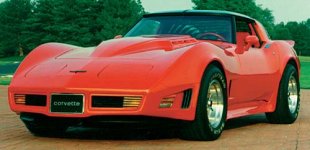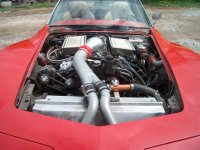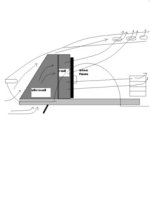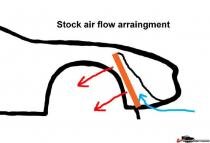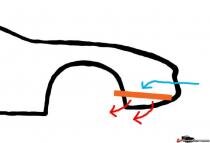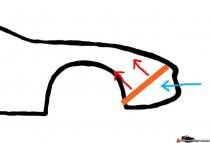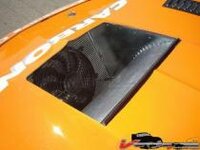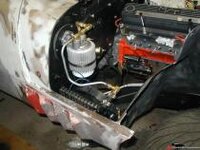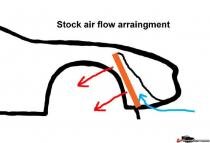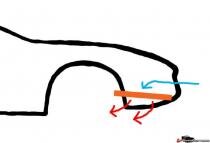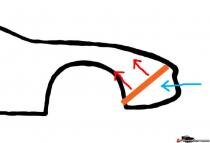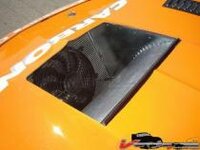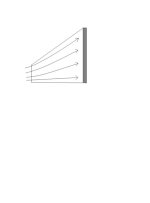I been reading some of these aero posts and thought I would show you guys how my front end is set up and see what you think. With this big block twin turbo setup I was looking for good cooling and I didnt feel like the sloped back radiator setup looked that good for max cooling. Even with the small block, the car never did cool all that great. I took duct tape one day and sealed the front up as tight as I could, filling in all the little cracks, holes around anything that was in the nose, ect. I got some high density foam and redid the foam over the rad support to get an air tight seal between it and the hood. Even with that it didnt seem like it made much of a difference to cooling capacity in the summer heat. Part of the problem was not having some sort of an air dam under the front of the car to catch more air to push through the radiator. I read a few articles on making radiators work better and decided to try my own idea. I got a new Dewitts aluminum radiator with the twin spal electric fans and stood it straight up, then built an aluminum duct in front of it to catch air for it. I think you guys might call my setup a bottom feeder. I put a big rubber air dam on the backside of the duct to catch lots of air. This setup left enough room in front of the duct to put intercoolers just behind the front grills, and still leave enough room for air from the intercoolers to go up and over the rad duct and into the engine compartment. I havent gotten around to the intercoolers yet so just the pipes are running through there right now. I also wanted some sort of vents in the hood to get rid of hot air so I bought a vented high rise hood, I had to add 1 inch to it to clear the carb hat. I built stainless boxes for the flat panel air cleaners then built ducting in the hood to seal them off from the engine compartment and they get fresh air from the windshield base area. On a side note, the other day I was driving it in a light rain and it was interesting how the rain drops moved on the windshield, on both sides the drops blew up the window but in the center section where the raised cowl hood part is, the rain drops moved down the windshield towards the bottom of it. I guess that tells me how the air flow is with the cowl hood, interesting. Anyway here are a couple of pics, I dont have a pic of my hood on this computer so the pic is of a car with the hood I used. Also a quickie drawing of how the radiator and ducting is set up. I was in town the other day and I blew a fuse on the electric fans so they quit. It was 85 degrees out and sitting at the stop lights the water temp would get up to around 210 but when I was moving at 35-40 mph, it would cool down to about 190. I actually drove around town for over an hour and the temps never did get above 210 degrees. I guess my setup is able to catch enough air even at those speeds to keep it cool, it surprised me. Anyway, what do you guys think?
Mike
Mike
Mike
Mike

